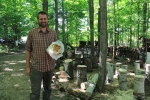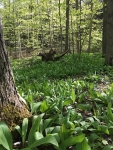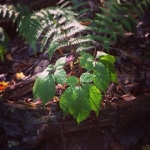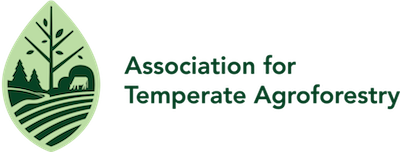| |
Hello Visitor,
Welcome to the December 2016 version of the Temperate Agroforester. The newsletter welcomes contributions for future issues and input or feedback about anything that you read in this issue.
Katie Commender & Uma Karki, Editors - Temperate Agroforester
Events
Membership
Are you a member of AFTA? If not consider joining by clicking here. Your membership gives you access to the members-only area, discounts on conference registration, and helps support AFTA's mission to promote agroforestry.
Contents
AFTAThe long-term goal is to sustain and maintain an AFTA award program that recognizes members and practitioners for their achievements in agroforestry. AFTA awards will enhance future programs and ensure continued interest in agroforestry practices. The AFTA Board of Directors is proposing four awards, granted biennially. The awards will be awarded at each North American Agroforestry conference (NAAC), beginning in 2017. Awards can be self-nominated or an individual is nominated by another. Award winners will be recognized during the biennial conference lunch on June 27, 2017.
- Outreach and Education Award (AFTA members only)
- Research Award (AFTA members only)
- Early Career Award (AFTA members only)
- Practitioner or Producer Award (AFTA member or non-AFTA member)
Click here for more information:
Priya Jaishanker User generated content has taken the internet by storm and has offered us an unlimited amount of insight into the lives of people around the world. While the quantity of homemade videos has sky rocketed, the quality often suffers, leaving us skimming through videos and searching for valuable nuggets of information. At Virginia Tech, we wanted to harness the power of social media to spread the word about agroforestry practices in the temperate forests of North America. Our aim was to create educational content shaped by quality production, creativity, and professionalism.
Michelle Baumflek Each spring, hundreds of thousands of pounds of edible greens known as ramps make their way from forest floors to farmer’s markets, restaurants, and retail stores across North America. The increasing commercial popularity of ramps over the past 20 years has raised concerns about their sustainable management. But, what could the sustainable harvesting of ramps on a commercial scale look like? This is the question that a new agroforestry research partnership seeks to answer.
Katie Commender The central Appalachian region is rich in mountainous forestland, creating an ideal habitat for non-timber forest products (NTFPs) like goldenseal (Hydrastis canadensis), black cohosh (Actaea racemosa), and wild yam (Dioscorea villosa). However, aside from ginseng (Panax quinquefolius) (Figure 1), whose high value has lent to decades of lucrative poaching, opportunities to profitably grow and market many of these NTFPs are limited for several reasons. First, if existing stands are lacking, it can be cost prohibitive and difficult to find locally sourced planting stock. Second, the lack of access to efficient washing, drying, and processing equipment can severely decrease profitability, as the cost of production is often more than the price obtained for fresh botanicals. Lastly, many forest farmers struggle to grow a sufficient volume to engage larger buyers independently.
Uma Karki Silvopasture is a sustainable agroforestry practice where trees and forages are grown together in a single management unit, and grazing livestock are incorporated into this unit to utilize the available forages. A silvopasture system can be developed by thinning down existing woodlands, and establishing and managing suitable forage species in the remaining available space. As most small-scale livestock producers in the Southeast have limited acreage of open pasture, but have several acres of woodland, there is a tremendous potential to develop silvopasture systems to extend and expand grazing opportunities. To successfully develop and manage silvopasture systems, information is needed on suitable forages. Experts at Tuskegee University evaluated eight different cool-season forages for goats at two different sites.
|
|




